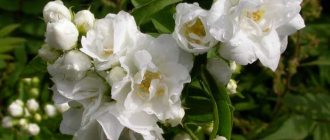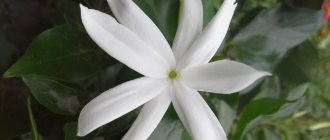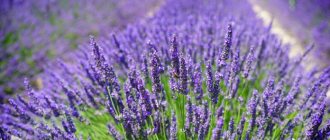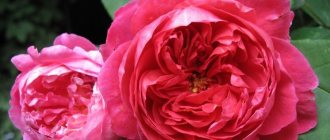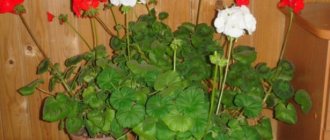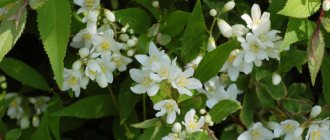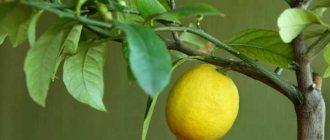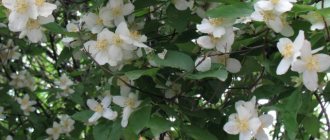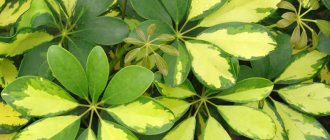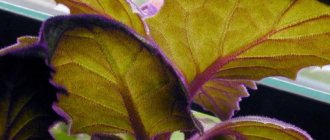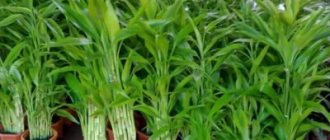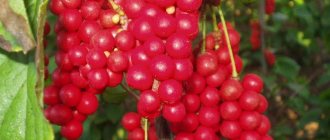External differences of mock orange:
- the stems are covered with gray-brown thin bark;
- leaves are green, ovate, arranged oppositely;
- inflorescences of lush racemes consist of flowers in the form of a goblet (up to 6 flowers in an inflorescence);
- after flowering, a fruit capsule with small seeds is formed;
- Flowering duration is approximately 20 days
Chubushnik grows in most areas of central Russia; It is distinguished by its winter hardiness, tolerates light shade and poor soil. Garden or false jasmine is resistant to severe frosts (down to -25) and overwinters without shelter. The flowering time of this shrub is in June-July. The intensity of the pleasant scent of mock orange flowers depends on the variety and time of day.
Planting mock orange, caring for it and propagating
Why Chubushnik does not bloom, poor growth
Garden jasmine and mock orange are naturally shade-tolerant, not picky about the type of soil, and drought-resistant. But in the shade the branches stretch out, and poor soils without fertilizing lead to shrinkage and degeneration of flowers. To achieve an amazing result, it is better to choose an open place or slight partial shade. The best option is loamy soil types, provided with humus and moisture, and for heat-loving varieties - light soil with good drainage.
Note! Mock orange grows quickly, so it is better to choose seedlings in small pots. Seedlings from Holland are brought to stores in March, when all the specimens have not yet awakened. Sometimes it is difficult to tell if a plant is alive. The bark at the base should be gray, the shoots smooth brown.
The species reproduces by dividing the bush. To do this, they dig it up along with the roots and divide it in two, the halves are planted in prepared holes and watered. This procedure is carried out in the fall from early September to early October.
You can also propagate by layering; to do this you need to follow these steps:
- Select a young shoot of this year that has not yet bloomed, with 2 internodes, and cut it obliquely with a sharp knife.
- Make a straight cut 1.5 cm above the upper internode.
- Using scissors, cut 2/3 of the leaves.
- Prepare a container with turf soil and a 3-centimeter layer of sand on top.
- Make holes with a stick to a depth of about 1 cm, then insert the cutting, carefully strengthening it.
- Pour, cover with a bottle, film or glass.
For your information! For rooting, it is recommended to use the drug Kornevin, ventilate the greenhouse daily and spray the cuttings.
After rooting, the shelter must be removed. In warm climates, you can do without protection and root the cuttings outdoors.
Shoots prepared in the fall are planted in the spring.
Jasmine and mock orange shrubs are rarely propagated by seeds. The ovaries are usually cut off immediately after flowering to preserve the plant's vigor. To inherit varietal qualities, it is customary to propagate by shoots or by dividing the bush. But if such a need arises, by the end of summer the ovaries will turn into dry boxes. They should be placed in a plastic bag and stored in the refrigerator. Sow in late autumn before winter, covering with straw. In spring, young seedlings are hidden from the sun using lutrasil on a frame until they get stronger.
You can plant seedlings in a greenhouse or at home. If the soil is heavy, you need to dig a planting hole 40x40 cm. When planting, add two parts of compost, three - garden soil and one part of sand, a glass of ash and 1 tbsp. a spoonful of double superphosphate.
Care includes fertilizing, watering and pruning; the roots are insulated for the winter. Fertilize annually with one bucket of manure. Small fertilizing after flowering is possible. When planting, a young bush is immediately trimmed. Only weak shoots are cut to 1-2 buds, but already in the second year after flowering, all strong shoots are pruned to generative shoots, and weak stems are also removed and a crown is formed. From the third year, sanitary and formative spring haircuts are carried out.
Mock orange is rightfully considered one of the most beautiful garden plants in temperate climates. Easy care, lushness, and amazing aroma make it a favorite of landscape designers and ordinary gardeners.
Main features of jasmine
Jasmine comes from the genus of evergreens and the olive family and is properly called “JASMINUM”. Heat-loving jasmine can only grow in a greenhouse or indoors. The winter temperature limit for jasmine is +10—it does not tolerate frost at all. In Russia, this species is found only in the south (Transcaucasia, Crimea). Jasmine petals, thanks to their pleasant rich aroma, are used in perfumery, cosmetology, and aromatherapy. A particularly strong aroma comes from jasmine after sunset.
Not jasmine, but mock orange, but also good
02/02/2017 While looking through the assortment of seedlings in online stores, I noticed an advertisement for the sale of jasmine seedlings. The description stated that large-flowered jasmine was for sale for growing in open ground. Really? However, a moment later, when I saw a photo of the plant, I realized that I had once again encountered a common mistake: a completely different plant, mock orange, is being passed off as jasmine.
Jasmine and mock orange are often confused by both novice gardeners, quite sincerely mistaking one species for the other, and experienced seedling sellers. Although the latter in many cases are not so much confused themselves as they confuse buyers. So, in fact, it is very simple to distinguish jasmine from mock orange, without even going into botanical details (and these plants belong not only to different species or genera, but even to different families). If you live somewhere in the middle zone and see garden jasmine for sale, know: this is mock orange. Simply because real jasmine is a resident of warm countries. And it does not grow at the latitude of Kyiv, Vinnitsa or St. Petersburg. In open ground, its different species can be found in the Crimea, the Caucasus, the Mediterranean countries, and Southeast Asia. And if you really want to have real jasmine at home, but you still live in a colder climate, then go not to the garden market, but to a flower shop. There you can often find several species of this plant on sale, most often grandiflora jasmine or jasmine sambac. In indoor conditions, these species feel great and delight owners with flowers with a wonderful aroma.
However, everything said above in no way detracts from the merits of the garden “jasmine” - mock orange. This genus of plants of the hydrangea family has more than 60 species. The Latin name of the genus is Philadelphus. This word with a beautiful sound is derived from the name of the ancient king Ptolemy Philadelphus, after whom this genus of plants is named. But the Russian name is more prosaic and comes from the word “chubuk” - a part of a smoking pipe. It turns out that mock orange wood is well suited for making such products. The homeland of different species of these plants is North America, East Asia, the Far East and various regions of Europe. Some of them have been known in culture for 8–9 centuries.
Such a long history of growing mock orange in gardens could not but affect the appearance of the plants. If its wild species are slightly more than six dozen, then there are a great many garden forms, varieties and hybrids. Breeders have bred tall and low mock oranges, with different shapes and sizes of leaves, with simple and double flowers, odorless or with a surprising variety of aromas. By the way, it is precisely because of the pleasant aroma of many varieties that mock orange is sometimes called “jasmine.” But not all of its varieties have this quality. Sometimes you can find forms whose smell is quite unpleasant, even repulsive. Therefore, if you have the opportunity to look at the mother plants during flowering, from which you plan to take planting material, you should also pay attention to the smell of the flowers.
Many gardeners have been involved in breeding varieties and hybridizing mock orange. Hybrids and varieties bred by the French family have gained particular fame and popularity. The greatest success in breeding this particular plant species was achieved by Emile Lemoine, the son of the founder of the company and the dynasty of breeders, Victor Lemoine. Many of the mock orange varieties he bred have spread throughout the world and are rightfully considered standard. Based on them, modern breeders continue to develop new varieties.
If you want to place mock orange in your garden, you can do so with confidence. Despite its rather fragile appearance, it is a strong and hardy plant. If you plant mock orange plants along the borders of the plot at a distance of about 50 cm from each other, you will get a beautiful, dense hedge, which, moreover, will be covered with thousands of white flowers in the spring. Mock orange is no less effective in single plantings. During flowering, it will stand out as a bright snow-white spot against the background of the greenery of other plants. Since different varieties differ in flowering time, you can select several plants so that, passing the baton of bud opening to each other, they will delight with the luxury of flowers from May to August.
Despite the fact that mock orange prefers sunny places, it grows and blooms well in partial shade. It also grows in dense shade under the crowns of other trees, but the shoots in such conditions become elongated, and flowering becomes less abundant. It can be planted both in the spring, before the leaves bloom, and in the fall, in September - October. It is quite undemanding to the soil, although it grows better on fertile, not very heavy soil. But what it doesn’t tolerate well is excess or lack of moisture. Therefore, when planting mock orange in places where there is a risk of water stagnation, it is necessary to place a layer of drainage - pebbles, broken bricks, etc. - at the bottom of the planting hole. Fill the hole with a mixture of leaf soil, humus and sand.
Mock orange is especially sensitive to drought. With a lack of moisture, its leaves immediately lose their elasticity and wither. However, good watering quickly brings the plant out of this state. Although a prolonged lack of moisture leads to the fact that flowering, instead of 2 - 3 weeks, lasts only a few days, and then the flowers dry up. Therefore, during the dry period the plant must be watered. The frequency of watering is from daily to once a week, depending on the condition of the soil and atmosphere. A simple technique such as mulching the soil around it will help to water the plant less often. A layer of mulch, by the way, will help keep the soil around the plant loose and prevent weeds from germinating. Otherwise, you will have to loosen the soil and weed.
Mock orange responds well to fertilizing and fertilizers. In spring, nitrogen fertilizers are applied, including organic ones. After flowering, the plant needs potassium and phosphorus. Moreover, if it is not possible to fertilize with ready-made mineral fertilizers, you can use wood ash, which is scattered around the bush, and then watered.
Mock orange is a fairly long-lived plant. It can easily grow in one place for 30 years or more. But so that, like most shrubs, mock orange does not lose its decorative appearance with age and continues to bloom profusely, it needs to be pruned. Since last year's shoots bloom best, they are heavily pruned after flowering. At the same time, shoots of the current year are left, which, in turn, will bloom next spring. In addition, shoots that thicken the crown, grow inside it, dry trunks, and also trunks that are too old are pruned. If mock orange has been growing for quite a long time, in early spring, before the sap begins to flow, you can do rejuvenating pruning by removing excess stems and shortening the remaining ones to 30 - 40 cm. Of course, given that this plant blooms on last year’s shoots, there is no flowering in the year of rejuvenating pruning will.
Mock orange is also good because it tolerates cold quite easily. Moreover, it does not die even in frosty, snowless winters. And if it snows, these are ideal conditions for wintering for mock orange. In particularly unfavorable years, the ends of the shoots may freeze, which will negatively affect flowering, but not the plant as a whole. Therefore, there is no need to cover the plant for the winter. By the way, there are a number of varieties bred specifically for regions with long, harsh winters. Therefore, if you live, say, in Siberia, you should give preference to such varieties. And, for example, in Ukraine most varieties of mock orange feel good.
This plant propagates easily, and a number of methods are suitable for this: seeds, dividing the bush, cuttings, layering. Seeds germinate well in the spring, after preliminary stratification. And although this method allows you to immediately obtain a lot of planting material, plants grown from seeds will not necessarily inherit the characteristics of the parent variety. The seedlings will undergo segregation according to genotype and, accordingly, phenotype, which is good for further breeding work. This method is also quite suitable for propagating non-varietal, “wild” forms.
If it is necessary to preserve the characteristics of a variety, it is better to carry out cuttings or make layering. Moreover, the rooting rate of mock orange cuttings is almost one hundred percent. Usually, for this purpose, green cuttings with a “heel” are taken from the plant. However, you can cut into cuttings and just strong, well-developed shoots. They are rooted under a film, in a mixture of fertile soil and sand, sprayed regularly.
It is easy to get new mock orange plants from cuttings. To do this, bend the lower young shoots to the ground and dig in them. Soon they form a root system. You can separate them from the mother plant next spring.
You can also divide adult bushes, immediately planting the divisions in a new place. By the way, if there is a need to replant an adult bush, this is also quite possible. Only during transplantation or division of the bush, all shoots need to be cut off quite heavily. Therefore, there will be no flowering this year.
And a few words about diseases and pests. In this regard, mock orange is a surprisingly resilient plant. The only common pests you can find on it are aphids or spider mites. However, as far as I can judge from my own experience, mock orange is quite resistant to them. There was a case when aphids multiplied quite heavily on a currant bush, but the mock orange growing nearby remained unharmed. If, nevertheless, some pests are found on it, then they are combated in the usual ways using drugs standard for this type of pest.
That, in fact, is all the wisdom of growing garden jasmine. Returning to the beginning of the article, I would like to say only one more thing - about purchasing mock orange. It is better to do this with familiar gardeners or trusted companies. Because, unfortunately, instead of a plant of the desired Lemoine variety, you can quite easily buy some unknown hybrid or unremarkable “wild” form from unfamiliar sellers. Yes, it will be a mock orange, and it will bloom, and perhaps even be more resistant to adverse conditions. But you really wanted a specific variety, didn’t you? Therefore, be careful and good luck in growing this wonderful plant.
Varvara Bylinets
Photo by the author and from open sources
Share on social networks:
External differences of jasmine:
- curly or smooth, straight, green stems;
- simple, dark green, odd-pinnate leaves;
- flowers of regular shape from 5 petals (in the form of a tubular corolla) or double (up to 9 flowers in an inflorescence);
- an inedible berry is formed in place of the buds;
- Flowering duration is from 60 to 90 days
Unlike the unpretentious mock orange, jasmine loves moist, fertile soil and a warm place.
Jasmine has different flowering times - it can bloom at any time of the year.
Decorative types of mock orange
Garden jasmine is presented in a variety of forms, differing in both general appearance and flowering. There are more than 20 types of mock orange used for decorative purposes. Some of the most popular and beautiful varieties are:
- Airborne landing . It has a sweet fragrant aroma. The bush itself has flexible two-meter shoots, which, when flowering, are completely strewn with small drooping bell-shaped flowers. Under their weight, the upright branches bend slightly towards the ground.
- Glacier . A low-growing shrub no more than 1.5 m high with double, large and fragrant flowers. A special feature of the variety is that after flowering the petals do not fall off for a long time. To prevent them from spoiling the appearance, it is necessary to cut off the wilted inflorescences.
- Mont Blanc . A dwarf bush up to 1 m in height, although in shady places it can stretch up to 1.8 m in search of light, losing its original decorative appearance. It differs from other species in having larger leaves. White semi-double inflorescences are collected in clusters of up to 5 pieces each and smell sweetly of strawberries.
- Pearls . A compact bush up to 1.3 m in height has the largest inflorescences - up to 7 cm in diameter. They are snow-white and terry.
Reproduction
You can increase the number of garden jasmine yourself. To do this, you need to choose one of the methods of propagating the plant.
- Seeds are planted in open ground in the fall, deepening them to 25-30 cm. The area with the planted seeds is mulched. In the spring, the mulch is removed.
- Propagation by cuttings is carried out in the spring, or after flowering has ended. The upper shoots from the mother bush are cut off, planted in open ground and covered with film or a glass jar. As soon as the cuttings take root, they are opened and transplanted to a permanent planting site.
Jasmine: medicinal properties, uses and benefits
Many people ask the question: “What are the benefits of jasmine?” This plant is widely used for medicinal, cosmetic and culinary purposes. The beneficial properties of jasmine are determined by its rich content of essential oils, formic, benzoic and salicylic acid. Crushed jasmine leaves and flowers are often used to disinfect wounds. It is generally accepted that jasmine is a “female” plant that helps get rid of many diseases. Jasmine decoction promotes lactation, jasmine tea and warm baths can reduce pain during menstruation. The healing properties of jasmine are widely used to treat liver cirrhosis, hepatitis, rheumatism, bronchial asthma, hemorrhoids, and eye diseases. All parts of this useful plant are used to prepare medicines - flowers, roots, jasmine leaves.
The benefits of jasmine have been known for a long time. The healing properties of jasmine are used in cosmetology. It is an excellent anti-aging product and can also be used to care for dry and sensitive skin. In cooking, special teas are prepared from jasmine petals, which have an invigorating and tonic effect on any person. Jasmine root is consumed raw to relieve headaches and insomnia. Jasmine oil is used for massage; it perfectly moisturizes the skin and has a wonderful aroma. It is also used as an antiseptic to disinfect wounds. Jasmine essential oil is an excellent antidepressant, it calms and normalizes the functioning of the entire body, in particular the central nervous system.
Signs and superstitions associated with stephanotis
Madagascar jasmine is considered by some to be a muzhegon. This means that a woman who grows this flower dooms herself to loneliness. In addition, the green jealous man expels husbands from the house, breaking up families. But this is an unsubstantiated superstition.
In some European countries, it is believed that blooming stephanotis promises a quick wedding in the house. It is not for nothing that snow-white flowers are an indispensable attribute of many weddings. Flowering vines, according to their lovers, bring happiness and financial stability to the house.
You should know that the caustic sap of a tropical plant, when it comes into contact with the skin and mucous membranes, causes burning and itching. For people with delicate skin, it is better to take care of it with gloves. Flowerpots with flowers should be inaccessible to children and pets.
In addition, these plants, which have a strong and persistent odor, should not be placed in bedrooms. They can cause insomnia and headaches.
What diseases do shrubs suffer from?
Garden jasmine and mock orange rarely get sick and are exposed to pests. But due to dense planting, as soon as one bush becomes infected, the diseases immediately spread to neighboring plants. Therefore, in autumn and spring, shrubs are treated with professional preparations.
Diseases and pests:
- If grayish spots appear on the leaves, this means that the bush is exposed to gray rot.
- Drying of the leaf cover is caused by aphids, which suck the plant from plants.
- If white butterflies appear on the bushes, then it is most likely hawthorn. In winter, its caterpillars will damage the buds, and in the spring, young shoots.
- The rhizomes of shrubs often suffer from the larvae of click beetles, which completely destroy them. Meanwhile, adult beetles eat the leaf cover of shrubs.
Important! Garden jasmine loves abundant watering, but the close location of groundwater causes rotting of the rhizomes and the spread of fungal diseases .
Cross-pollination
If identical crop varieties are planted, cross-pollination is not a problem for them. It is necessary to avoid planting hybrid, terry shrubs, which, when cross-pollinated, lose their decorative properties.
See also
Planting and caring for Kampsis in open ground, reproduction and cultivationRead
Such plants are planted separately, away from the main plantings.
Is it possible to plant next to
Garden jasmine is a cultivated plant that was bred from various varieties of mock orange. Therefore, planting these plant varieties together is quite acceptable.
Important! Garden jasmine is not only a beautiful, but also a useful plant. During the flowering period, essential oils are formed in the inflorescences, which contain many useful substances necessary for the functioning of the body. .
Winter care
An adult garden jasmine does not need special care in winter; it does not need to be covered. Young specimens should be covered for the winter with a layer of peat or pine needles. It is useful to cover the place where the root system is located with leaf humus. After heavy snowfalls and at the end of winter, it is necessary to free the crown of the bush from the snow cap.
Before the first snow appears in the fall, the root system is insulated with a layer of compost or humus at least five centimeters thick. You can add some phosphorus-potassium fertilizers, they will increase frost resistance. A coconut felt spread on the ground would be a good “blanket” for the roots.
Plants that have not yet reached their full size are covered with snow as it appears. Many varieties lose in frosts that part of the branches that rises above the snowdrifts. This is not critical.
Preparing for winter
In order for the plant not to die in winter, it must be properly prepared for this difficult period. To do this, you need to perform a few very simple manipulations:
- It should be remembered that adult specimens are more frost-resistant than young ones. Therefore, it is quite possible not to prepare adult plants for the winter period. However, those jasmines that are still quite young need this procedure.
- When the bush fades, it should be wrapped in material specially designed for this. You can also use regular straw for this purpose.
- To prevent jasmine roots from being damaged during the winter cold, in the autumn you need to dig up the soil around the trunk and do not forget to add compost to it.
- If desired, this shrub can be transplanted to a new place in the spring.
Pest and disease control
If you comply with all the conditions of detention, the mock orange is almost no more, but even it is not one hundred percent insured.
The most common problem is gray rot, for which it is not enough to treat the bush with a fungicide. First, be sure to collect fallen leaves, thin the plants, and remove any damaged areas to prevent the disease from spreading. Septoria blotch is another fungal disease that appears as round brown spots, necrosis, and black fruiting bodies. It is easy to notice visually if you regularly inspect the bush. Keep in mind that the infection persists even in plant debris, so in addition to fungicides, be sure to destroy all damaged areas. To prevent the appearance of small bean aphids, use insecticides in early spring. In summer, hawthorn butterflies appear, drink flower nectar and breed on the leaves. This is a common problem for all deciduous trees and bushes. Less common are click beetles and their larvae, which chew off roots and leaves. To avoid this, in addition to medications, do not forget about draining the area, removing weeds and liming acidic soil.
